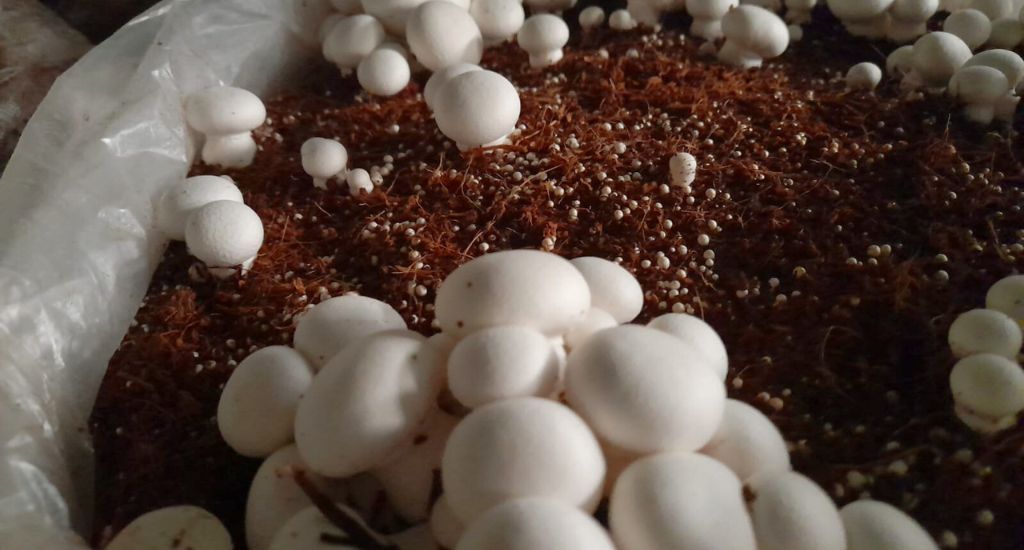
Kashmir’s youngsters take to mushroom farming
With help from the government, thousands of youths turn to mushroom cultivation to earn a livelihood.

With help from the government, thousands of youths turn to mushroom cultivation to earn a livelihood.
Many young Kashmiris, like Shabir Ahmad Ahanger, were looking for a niche when they decided to go into mushroom farming. It took a little while for the market crowd to embrace this new commodity, but once they did, business mushroomed for the farmers.
Growing mushrooms isn’t easy so 20-year-old Shabir, who is studying for his graduation in agriculture, was somewhat surprised at how well things went. But he went into the operation having done his homework well.
He applied for a government scheme promoting mushroom farming in his native village of Seer in south Kashmir’s Anantnag district.
“The department gave me 100 bags of mushroom-growing equipment,” he said.
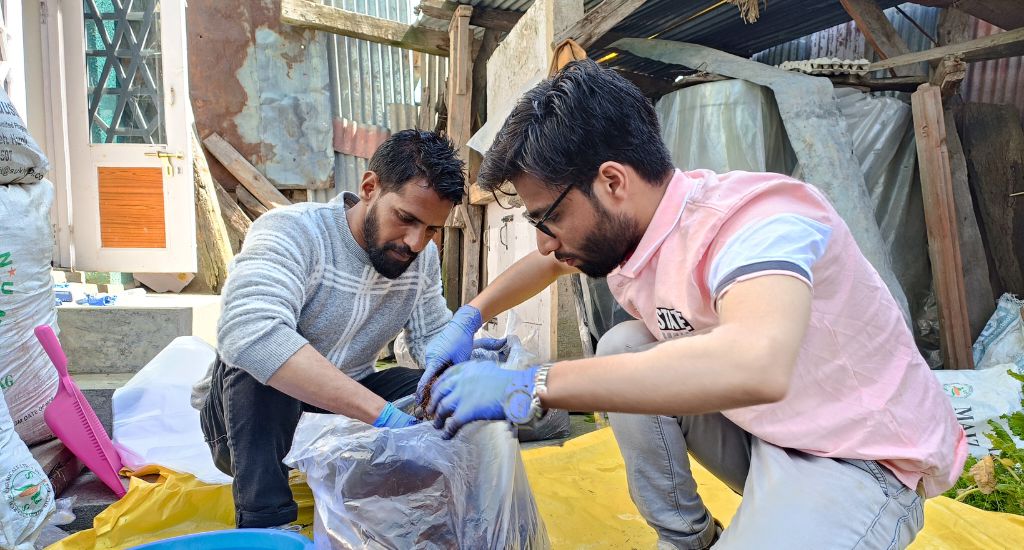
He was assigned an expert, Imran Bashir Magray, who works with the department of mushroom cultivation – to oversee his unit.
“Our job is to visit their farms and train them. The focus is to get maximum returns,” said Magray.
The youthful mushroom club is growing. Consumer demand and health benefits are fuelling the increase, and small farmers in Jammu and Kashmir are taking advantage of it.
Plus, mushroom farming requires little capital and can be grown indoors on a small scale.
Syed Sadaf has been cultivating the fungi in her home in Anantnag district after getting her BTech degree last year.
“I am doing this on the side while preparing for competitive exams,” she said. “Apart from training, the department gave me all necessary materials like compost, polythene bags, spawns and so on.”
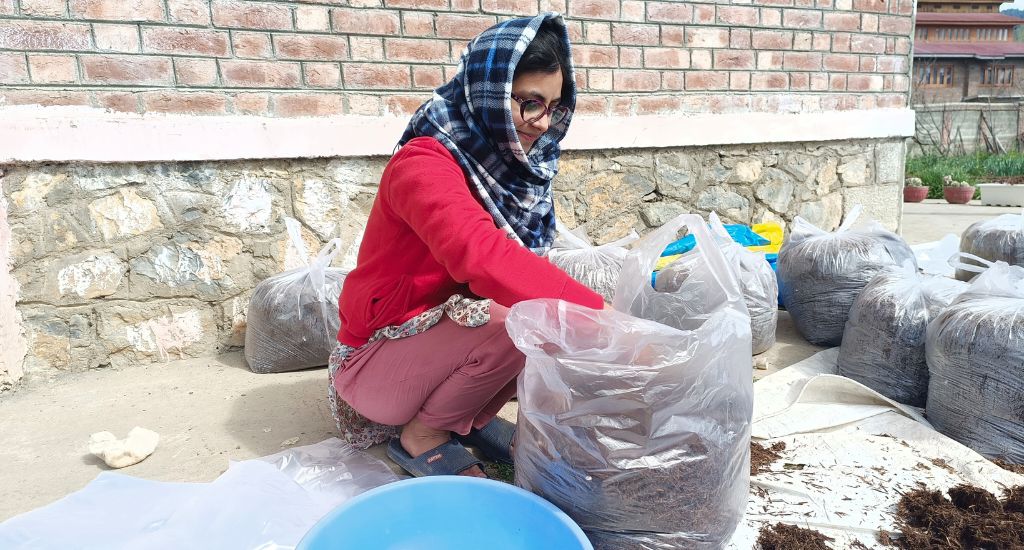
Showkat Rasool Bhat, 40, has a PhD in zoology from Chennai’s Annamalai University. He came to know of the government scheme from social media and got involved. “It can be done at home in a limited space. Mushrooms have a huge market in Kashmir.”
Rich in protein, vitamins, antioxidants and fibre, mushrooms are a revered delicacy and income earner around the world, especially in places where food and formal jobs are scarce for many.
But fungi seldom found a spot in Kashmiri’s famed culinary history until recently.
Mushrooms are now gaining an equal footing with meat and fish entrées of Wazwan, the famed Kashmiri multi-course meal reserved for special occasions such as wedding feasts. Vegetarians like mushrooms as a meat substitute.
Three varieties are grown in Kashmir, namely button, milky white and dhingri, another name for the king oyster mushroom. These are cultivated either in a natural environment on outdoor farms or inside homes in a controlled atmosphere.
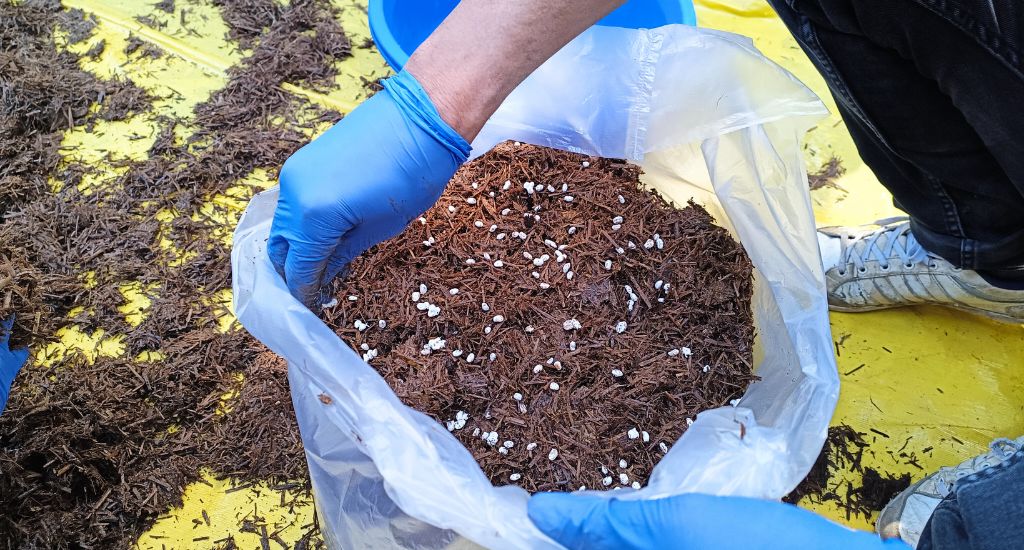
Jammu and Kashmir’s temperate climate is suitable for mushroom cultivation. The ideal temperature is between 20 and 30 degrees Celsius, and the required humidity is 55 to 75 per cent.
Indoor production has ensured mushrooms are grown year-round, even during the region’s harsh winter when the Celsius drops below zero.
It takes up to 45 days for a crop to grow in each cycle.
“With proper care, there can be more than six cycles a year,” Magray said.
It sounds easy but it’s a lot of work. Temperature, humidity, light and air flow all need to be controlled to be successful. Good compost and spores are the other requirements.
Mushrooms are grown on a substrate of polythene bags filled with maize starch compost, which are then inoculated with spawns or mycelium – thread-like collections of cells that eventually become fungi. Once the mycelium colonizes the substrate, fluffy white layers of patches appear on each casing.
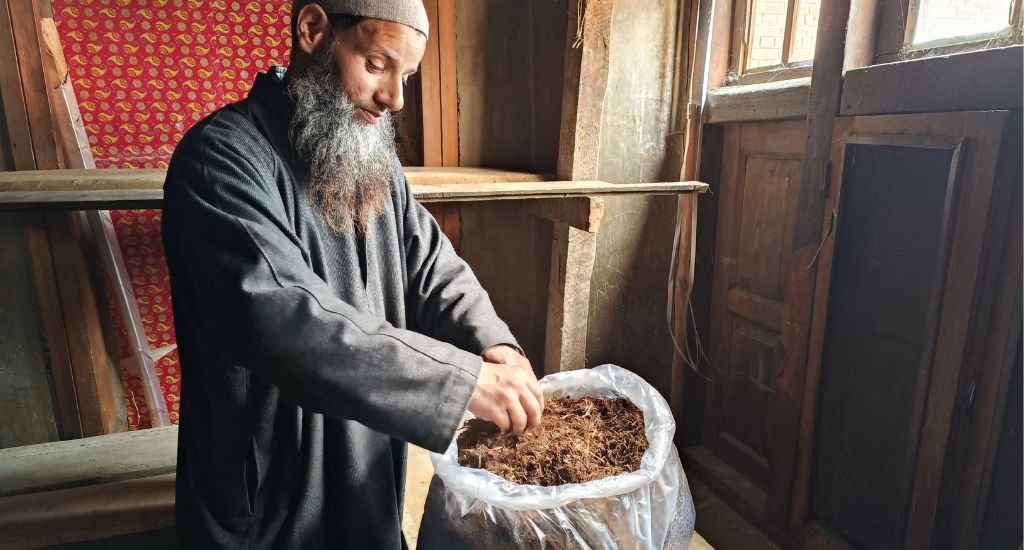
“Later we add coco peat and increase the room temperature where mushrooms are grown,” said Magray. “They are soon ready for harvest, but pluck gently,” the expert said.
Mushroom-growing picked up during the coronavirus pandemic, with people looking for a new source of income as businesses shuttered.
“Mushroom farming generates revenue…creates a significant amount of direct and indirect employment opportunities,” said additional chief secretary Atal Dulloo.
The fungiculture got a big push from the government’s Rashtriya Krishi Vikas Yojna, which provides a 50 per cent subsidy to set up a mushroom unit, including 100 bags of compost and casings.
The government launched a new, Rs 42-crore project this year to build 26 pasteurised compost-making units, 10 spawn production labs and 72 controlled conditioned cropping rooms (2,000 bags capacity). About 300 women’s self-help groups will be formed to encourage mushroom farming and an additional Rs 2.1 crore will be spent on research and development.
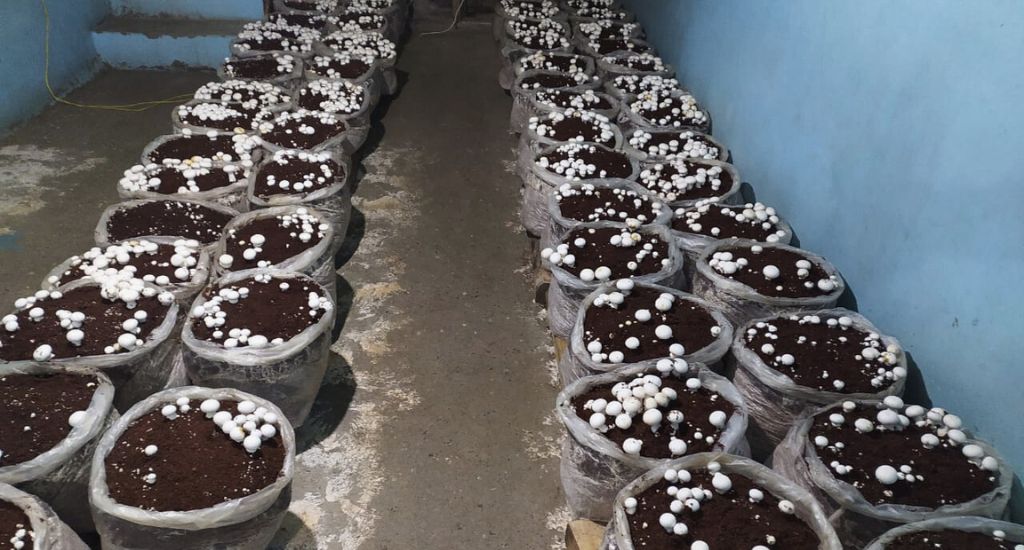
“Mushroom is an important cottage industry. The cash crop will generate jobs and income for the youth of Kashmir,” said KK Sharma, director of agriculture and farmers’ welfare.
Sales of mushrooms are increasing at restaurants and markets because they pack a chock full of good things — low in fat, low in cholesterol and low in calories. Their varieties come in a range of light to dark, with the flavour becoming more intense as the colour darkens.
The lead image at the top shows mushrooms in full bloom are ready to be plucked and sold in the market (Photo by Aamir Ali Bhat)
Aamir Ali Bhat is a journalist and independent researcher based in Kashmir. He writes on human rights violations, politics and the environment.